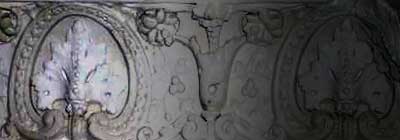|
The name "drywall" is believed to have been derived from its replacement of the wet wall building method known as "lath and plaster", where wet plaster is applied and spread over small wooden formers.
From its invention and development by "The United States Gypsum Company" in 1916, Drywall took a very long time to become popular. Even after its extensive use and promotion at the Chicago World's Fair in 1933–34, drywall was mostly thought of as an inferior alternative to the former lath and plaster method.
During World War II, the skills shortage and the increase in the cost of labor gave way to increased use of drywall due to its ease of application and affordability.
Then in the 50s there was the great migration to the suburbs, and with it the need for cheaper construction methods, so in 1952 drywall was reintroduced, since then its popularity and quality has steadily increased, and today drywall is the most widely used product for lining internal walls and ceilings.
Drywall is a common building material used for the finish lining of interior walls and ceilings.
Drywall is also commonly referred to as GIB® board or GIB® in New Zealand. (GIB® is a trade mark of Fletcher Building Holdings Limited used under licence by Winstone Wallboards Limited.).
Gypsum board or plasterboard in the UK and Ireland,
Rock lath or sheetrock in the United States,
Gyprock in Australia and Canada (GYPROCK is a registered trademark of CSR Building products Australia) and referred to as Rigips in Eastern Europe and Germany.
A drywall sheet is basically made by sandwiching gypsum plaster between two sheets of paper to form a liner. Of course there is a lot more that goes into it but basically that’s it. In fact there are several different grades or types of drywall available, these different types have been developed to better suit certain areas or applications of a building and to also meet the local required building standards, such as wet areas, sound rating, fire rating etc (some are color coded to represent there use).
The drywall sheets range in length anywhere from 2 to 6 meters and are typically 1.2 meters wide, there is also a 1350 wide verity available for use where 2.7 meter high walls and horizontal joints are required.
When large amounts of a non standard size are required, you should contact the manufacturer.
Other areas that may interest you:
Cornice, Fibrous |
|
